In this conversation with TheCSRUniverse, Ms. Parul Mittal, Director at Greenlam Industries, dives into the company's impactful CSR initiatives. Their "Smart Parenthood" program tackles maternal and child healthcare holistically, empowering communities through education and shared responsibility. The program boasts impressive results in areas like institutional deliveries and preventative measures. Greenlam's dedication to education goes beyond infrastructure. They provide teacher training, integrate technology, and promote health and hygiene, all contributing to measurable gains in student skills. They strategically select initiative locations considering both challenges and opportunities and address these unique contexts to ensure sustainable change. The company utilizes a robust evaluation system with surveys, assessments, and community feedback to measure impact.
Greenlam prioritizes long-term sustainability through community involvement and fosters a sense of ownership. Recognizing the power of collaboration, the company partners with esteemed organizations to leverage expertise and amplify their impact. Additionally, strong community partnerships are a cornerstone of their success. They actively engage employees through committees, ensuring their participation in these vital efforts. By prioritizing impactful programs, collaboration, and sustainability, Greenlam Industries is making a significant contribution to healthier communities and brighter futures.
Scroll down to read the full interview:
Q. Can you provide an overview of the "Smart Parenthood" program and its key achievements in mother and child healthcare?
A. The Greenlam Young Parents Program focuses on health, nutrition, hygiene, sanitation, and non-communicable diseases by adopting a gender-equitable and inclusive approach.The program aims to improve the Reproductive, Maternal, Newborn, Child, and Adolescent Health (RMNCH+A) status by empowering women and men in intervention communities. This innovative program tackles maternal, child, and adolescent health in a holistic way, focusing on six key pillars:
1. Active Participation: The program directly engages newly married couples, recognizing their crucial role in building healthy families and futures.
2. Strength in Numbers: A robust peer support network has been established, ensuring that every single village in the 45 selected villages has at least one dedicated peer leader. These leaders provide ongoing information, counseling, and referrals, creating a sustainable support system.
3. Skilling Up for Success: A total of 165 frontline healthcare workers, including ASHAs, ANMs, and AWWs, have received specialized training to enhance their ability to deliver high-quality reproductive, maternal, newborn, child, and adolescent health (RMNCH+A) services.
4. Spreading the Word: Over 500 impactful Behavioural Change Communication (BCC) sessions conducted within the community, raising awareness, and promoting positive health practices.
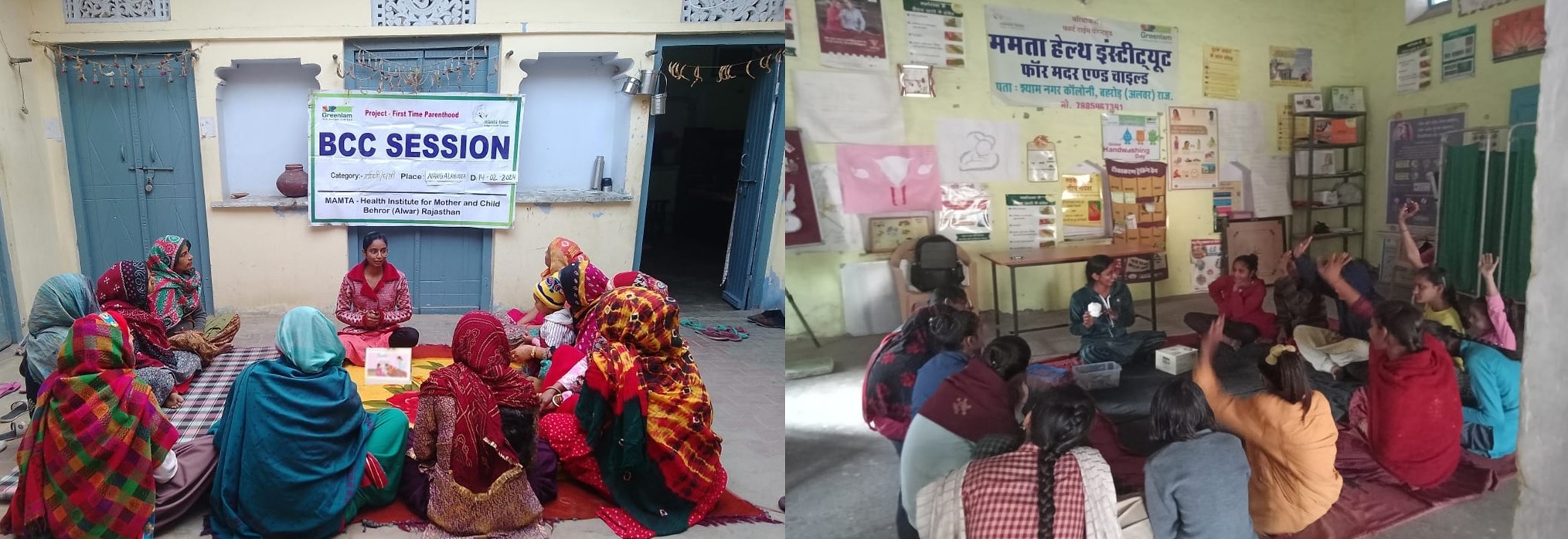
5. United for Impact: The program fosters collaboration between healthcare providers and community members, ensuring seamless and effective service delivery at the local level.
6. Community as the Cornerstone: Existing community institutions, such as Panchayat Raj Institutes (PRIs) and religious organizations, have been empowered to champion the program's goals, creating a truly community-driven approach to health and well-being.
Our recent program has brought about a wave of positive change, reaching the heart of 45 villages, and touching the lives of 2676 individuals. This journey, focused on empowering communities to prioritize healthcare, has yielded remarkable results, particularly among unmarried youth (1922), pregnant women, senior citizens, frontline health workers, and mothers-in-law.
Beyond simply reaching beneficiaries, we've witnessed a profound shift in mindset:
- Knowledge is Power: Through our program, peer leaders have blossomed into health champions, equipped with vital knowledge on maternal and child health, nutrition, family planning, hygiene, and more. They are now empowered to tackle emerging health, gender, and environmental challenges head-on.
- Breaking Down Barriers, Building Awareness: A significant leap in community understanding of crucial health topics – from reproductive health and nutrition to non-communicable diseases and environmental protection – has paved the way for proactive health-seeking behavior.
- Positive Actions, Lasting Impact: The program has sparked a ripple effect of positive behavioral changes. We've seen increased male engagement in maternal health, stronger family collaboration on family planning, and improved dietary habits among women and young girls. Furthermore, lifestyle modifications among youth are actively combating the rise of non-communicable diseases.
- Tangible Progress, Healthier Futures: The numbers speak for themselves: a surge in institutional deliveries, higher adoption of family planning methods, and increased screenings for non-communicable diseases at health centers. The community's commitment to environmental care is also more evident than ever.
- United for a Healthier Tomorrow: The program has fostered a powerful sense of collective responsibility towards maternal and child health. This unity is driving down the prevalence of non-communicable diseases and fueling community initiatives for a safer, cleaner environment, embracing practices like recycling.
This is more than just a program; it's a movement towards a healthier, brighter future, built on empowerment, knowledge, and collective action. And this is just the beginning.
Q. What inspired Greenlam Industries to focus on improving learning outcomes in communities, and what unique strategies are being employed to bridge these learning gaps?
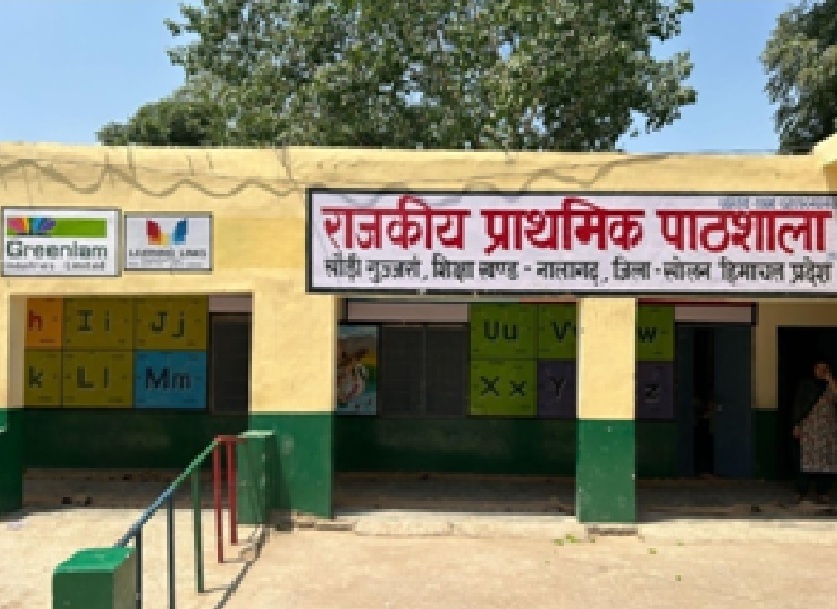 A. Greenlam Industries is inspired to focus on improving learning outcomes in communities due to a deep commitment to social responsibility and the belief that education is a key driver of socio-economic development. Recognizing how quality education can transform lives and uplift entire communities, Greenlam Industries aims to address the significant educational disparities in underserved areas. This commitment extends beyond Greenlam's existing initiatives in healthcare and water, which primarily benefit adults. By prioritizing education for children, Greenlam aims to create a ripple effect of positive change that uplifts entire families and communities for generations to come.
A. Greenlam Industries is inspired to focus on improving learning outcomes in communities due to a deep commitment to social responsibility and the belief that education is a key driver of socio-economic development. Recognizing how quality education can transform lives and uplift entire communities, Greenlam Industries aims to address the significant educational disparities in underserved areas. This commitment extends beyond Greenlam's existing initiatives in healthcare and water, which primarily benefit adults. By prioritizing education for children, Greenlam aims to create a ripple effect of positive change that uplifts entire families and communities for generations to come.
At Greenlam, our approach is to bridging learning gaps through multifaceted and impactful strategies:
1. Infrastructure Development: For building brighter future, Greenlam Industries is investing in the physical foundation of education, by upgrading infrastructure in two schools. This includes providing essential resources like projectors, laptops, and new furniture, while also renovating school buildings to create stimulating and conducive learning environments.
2. Empowering Educators through training: Recognizing that teachers are the backbone of education, Greenlam is committed to enhancing the skills of 10 educators through specialized training programs. This empowers teachers with the tools and techniques to deliver engaging and effective instruction, directly impacting student learning outcomes.
3. Holistic Support: Greenlam understands that education extends beyond textbooks. The company is dedicated to fostering the holistic well-being of students by implementing health and nutrition programs, promoting hygiene, and creating a supportive environment for both physical and mental growth.
4. Community Engagement Greenlam believes in the power of collective action. By actively engaging parents and community members of all the students in the schools (~136), the company is fostering a strong support network around students. This encourages higher attendance rates, reduces dropout rates, and creates a shared sense of responsibility towards education.
5. Technology Integration:Greenlam is committed to equipping students with the digital literacy skills necessary for success in the 21st century. By integrating technology into the curriculum, the company is making learning more interactive and engaging, while also bridging the digital divide in underserved communities.
Through these impactful initiatives, Greenlam Industries is not just building schools, but building futures. By investing in education, the company is investing in a brighter and more equitable tomorrow for all.
Q. Could you share specific measurable outcomes from your initiatives, such as improvements in children's writing and analytical skills?
A. We have seen significant progress in various areas of children's development, particularly in writing and analytical skills.
Our initiatives in the pre-primary field involved assessments of 178 children. We observed a substantial improvement in their physical development domain, with an increase of 69 percentage points from baseline to endline.
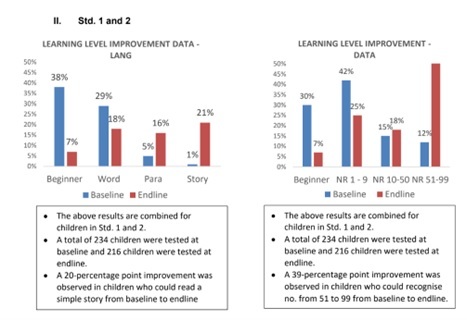
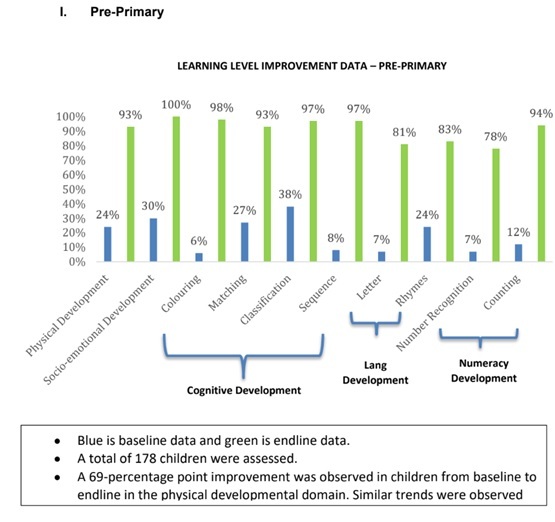
In the context of language learning improvements for students in Standard 1 and 2, we conducted tests at the beginning (baseline) and end (endline) of our program. Out of 234 children tested at baseline and 216 at endline, there was a noteworthy improvement of 20 percentage points in the ability to read a simple story. For numerical recognition within the same student group, we saw a 39-percentage point increase in children who could recognize numbers from 51 to 99 from baseline to endline. This was based on the assessment of 234 children at the start and 216 children at the end of the program.

We also assessed 394 children from Standard 6 to 8 in science-related domains - scientific vocabulary and scientific reasoning. The results were impressive, with a 65-percentage point increase in children correctly answering scientific vocabulary questions from baseline to endline. A similar trend was observed in their scientific reasoning abilities.
These measurable outcomes, illustrated in our graphs, clearly demonstrate the positive impact of our initiatives on enhancing children's writing and analytical skills. Our programs are effectively contributing to the holistic development of the children involved.
Q. What factors influenced the selection of Nalagarh, Himachal Pradesh, and Behror, Rajasthan, as key locations for your CSR initiatives? Are there unique challenges or opportunities in these areas?
A. India's smaller towns are at a crossroads, grappling with the growing pains of progress while striving to preserve their unique identities. The selection of Nalagarh, Himachal Pradesh, and Behror, Rajasthan, as key locations for our CSR initiatives was influenced by several factors:
1. Community Needs: Both Nalagarh and Behror are areas where significant socio-economic disparities exist, leading to various community needs such as education, healthcare, and livelihood opportunities.
2. Geographical Accessibility: These locations were chosen due to their accessibility and proximity to our operational bases, facilitating effective implementation and monitoring of CSR projects.
3. Stakeholder Engagement: We identified strong partnerships with local community leaders and government authorities through our implementation partners in Nalagarh and Behror, ensuring collaborative efforts towards sustainable development.
4. Strategic Alignment: The CSR initiatives in these areas align with our organizational goals and values, contributing to the holistic development of the communities while addressing pressing social and environmental issues.
Both Nalagarh in Himachal Pradesh and Behror in Rajasthan has distinct challenges but unique opportunities for growth as well.
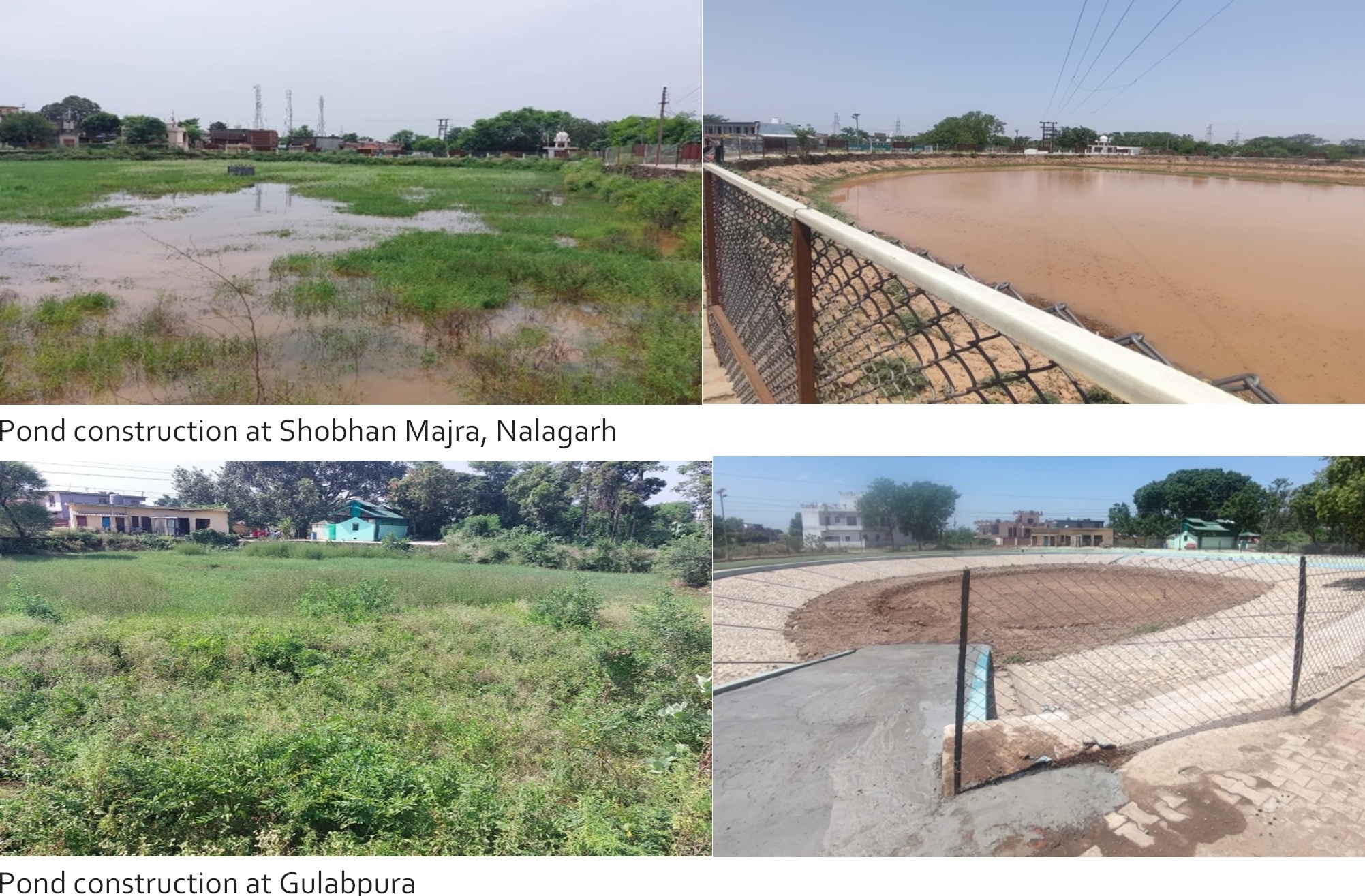
Nestled amidst the Himalayan foothills, Nalagarh faces the hurdle of ensuring equitable access to essential services. Remote villages, in particular, struggle with inadequate educational infrastructure and limited healthcare facilities. Furthermore, the region's rapid industrialization has sparked environmental concerns, including deforestation and dwindling water resources.
However, Nalagarh's rich cultural tapestry and abundant natural beauty offer a springboard for sustainable solutions. By leveraging its heritage, the town can promote eco-tourism and traditional crafts, creating alternative livelihood opportunities. Simultaneously, focusing on water conservation techniques and responsible industrial practices can mitigate environmental risks and ensure a healthier future.
Behror, situated in Rajasthan's industrial belt, grapples with socio-economic disparities. High rates of poverty and unemployment, especially among marginalized groups, pose significant challenges. Limited infrastructure and inadequate access to basic amenities like clean water and sanitation further exacerbate these issues.Yet, Behror's burgeoning industrial sector and ongoing infrastructure development offer a beacon of hope. These initiatives hold the potential to generate employment opportunities and uplift the local economy. Furthermore, strategic investments in education can empower communities, bridge socio-economic gaps, and pave the way for a brighter future.
Q. How does Greenlam Industries measure the impact of its CSR programs on school enrolment and attendance rates?
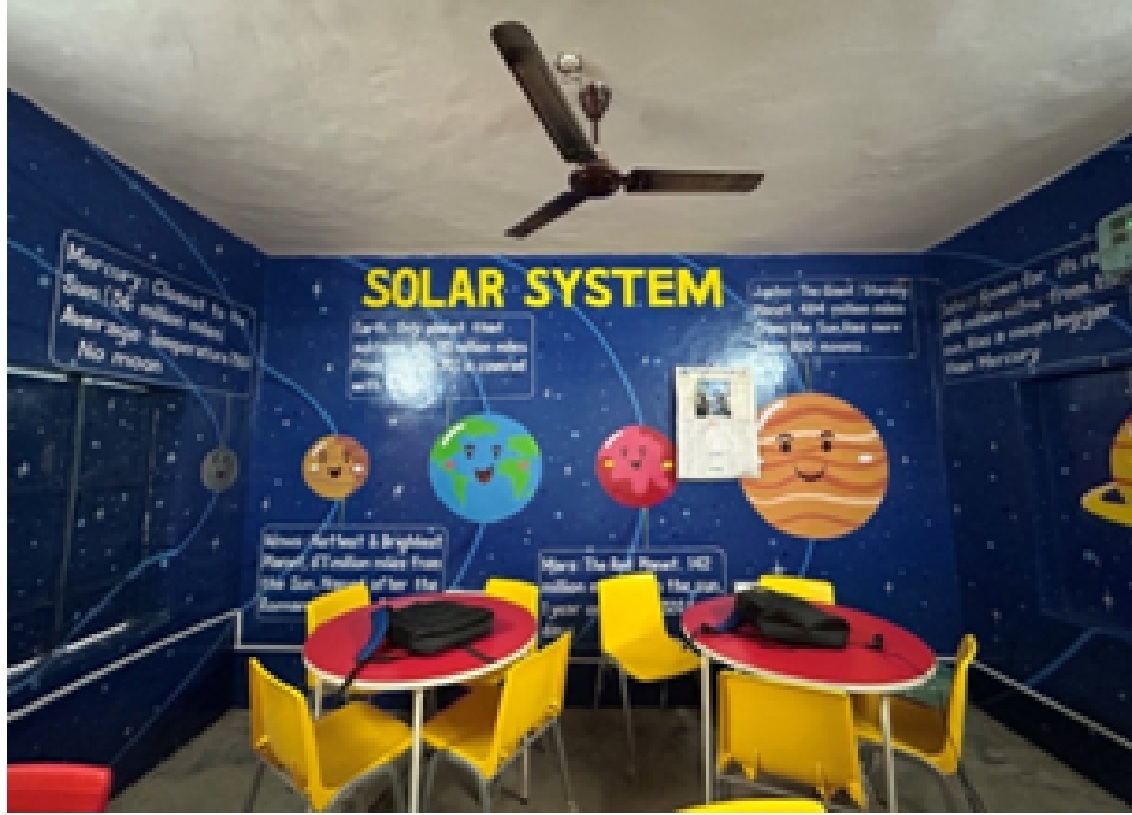 A. Greenlam Industries measures the impact of its CSR programs on school enrolment and attendance rates through pre and post surveys. Baseline and Endline surveys are also an integral part of our evaluation methodology. Periodic impact assessments are conducted to evaluate the effectiveness of the interventions. Additionally, qualitative feedback is also taken at regular intervals. Greenlam Industries utilizes a robust evaluation system to meticulously track the impact of its initiatives. The baseline surveys paint a clear picture of the existing educational landscape, including school enrollment and attendance rates, thus providing a crucial benchmark for measuring progress. Endline surveys, conducted after a program cycle, offer a direct comparison to the baseline, revealing the tangible impact of the interventions. This data-driven approach allows for a clear understanding of what works and where adjustments might be needed. Greenlam also conducts periodic impact assessments to delve deeper into the effectiveness of its initiatives. These assessments go beyond quantitative data, incorporating qualitative feedback from students, teachers, and community members. This multifaceted approach provides a holistic view of the program's influence, capturing both the visible and intangible benefits.
A. Greenlam Industries measures the impact of its CSR programs on school enrolment and attendance rates through pre and post surveys. Baseline and Endline surveys are also an integral part of our evaluation methodology. Periodic impact assessments are conducted to evaluate the effectiveness of the interventions. Additionally, qualitative feedback is also taken at regular intervals. Greenlam Industries utilizes a robust evaluation system to meticulously track the impact of its initiatives. The baseline surveys paint a clear picture of the existing educational landscape, including school enrollment and attendance rates, thus providing a crucial benchmark for measuring progress. Endline surveys, conducted after a program cycle, offer a direct comparison to the baseline, revealing the tangible impact of the interventions. This data-driven approach allows for a clear understanding of what works and where adjustments might be needed. Greenlam also conducts periodic impact assessments to delve deeper into the effectiveness of its initiatives. These assessments go beyond quantitative data, incorporating qualitative feedback from students, teachers, and community members. This multifaceted approach provides a holistic view of the program's influence, capturing both the visible and intangible benefits.
Q. In what ways have your initiatives enhanced self-esteem and confidence among women in the communities you serve?
A. In many underserved communities, women often face daunting obstacles when it comes to accessing quality healthcare and reliable health information. This lack of access can lead to feelings of helplessness and diminished self-worth. Recognizing this critical need, Greenlam Industries implemented a comprehensive, community-centric program designed to empower women and foster lasting change.
Greenlam's initiative adopts multi-prolonged approach to tackle the issue from multiple angles:
1. Education and Awareness: Intensive health education sessions, led by skilled community health workers, equip women with vital knowledge about maternal and child health, nutrition, hygiene, sanitation, and family planning. These sessions empower women to understand their bodies, advocate for their health rights, and prioritize regular check-ups.
2. Peer Support Networks: Establishing peer-led support groups was a cornerstone of the initiative. Women in these groups shared experiences, offered mutual support, and provided encouragement. These networks fostered a sense of community and belonging, which played a crucial role in boosting their confidence.
3. Trusted Healthcare Providers: By training local frontline workers (ASHA/ANM/AWW), the program ensures women have access to knowledgeable and empathetic healthcare providers. This trust encourages women to seek help comfortably and confidently.
4. Bridging the Gap to Care: The initiative connects women with local Primary Health Centers (PHCs), facilitating timely treatment and care. Witnessing tangible improvements in their health,women were empowered to seek medical help without hesitation.
5. Community Engagement: Engaging the wider community, including men, elders, and mothers-in-law, in health education helps dismantle cultural barriers and fosters respect for women's health. This inclusive approach creates a supportive environment where women feel valued and empowered.
Q. What future plans does Greenlam Industries have for its CSR efforts, particularly in terms of integrating sustainability into these initiatives?
A. Greenlam Industries believes in empowering communities to drive lasting positive change. We actively involve local communities, fostering ownership and ensuring the long-term sustainability of our initiatives.
Water as a Shared Resource: Recognizing the critical importance of water, Greenlam has partnered with local village councils (Panchayats) to establish four Village Development Committees (VDCs). These committees, comprised of over 70 dedicated members, are entrusted with the vital responsibility of maintaining the health and cleanliness of revitalized ponds. This collaborative approach ensures water resources are used wisely and sustainably for essential needs.
Education Initiatives: We are focused on supporting ten educators across two schools through targeted capacity-building initiatives. By providing training and resources, we empower these teachers to integrate crucial elements like Social Emotional Learning, hygiene practices, and digital teaching methodologies into their classrooms.
Healthcare Interventions: Our healthcare programs in 45 villages are designed to raise awareness and promoting positive behavioral and social change. This initiative fosters a health-seeking mindset within the community, empower communities to take charge of their own health, and ensuring a lasting impact for generations to come.
Through Greenlam's holistic approach, we strive to create self-sustaining communities where the benefits of our initiatives continue to flourish long into the future.
Q. Can you elaborate on any partnerships or collaborations that have been crucial to the success of your CSR projects?
A. Partnerships and collaborations have been pivotal to the success of Greenlam Industries' CSR projects. Our collaborations with esteemed organizations like Learning Links Foundation (LLF), Sir Syed Trust (SST), and MAMTA (Health Institute for Mother and Child) in FY 24 have been instrumental in amplifying our impact.
Empowering Education with LLF: Through our partnership with LLF we have been able to enhance educational outcomes by integrating crucial aspects like Social Emotional Learning, hygiene practices, and digital teaching methods into the curriculum. LLF's expertise in teacher training has been invaluable in ensuring these programs are delivered effectively, creating a ripple effect of positive change.
Nurturing Water Security with SST: SST (Sir Syed Trust) has been a key partner in our water interventions, helping to establish and support Village Development Committees (VDCs). Their collaboration with local Panchayats has ensured the cleanliness and maintenance of rejuvenated ponds and promoted the judicious use of water resources. SST's community-driven approach has significantly contributed to the long-term sustainability of our water projects.
Championing Health with MAMTA (Health Institute for Mother and Child):: Our healthcare initiatives have reached new heights thanks to our partnership with MAMTA. Their deep understanding of health promotion and community mobilization has enabled us to raise awareness and inspire positive behavioral changes across 45 villages. MAMTA's involvement has been crucial in fostering a proactive approach to health and improving the overall well-being of the communities we serve.
Community Partnerships: Beyond these incredible organizations, our strong partnerships with local communities, have been the backbone of our success. By actively involving community members in every step of our projects, we ensure greater accountability and lasting impact. This grassroots engagement fosters a sense of ownership, empowering communities to become agents of change.
At Greenlam Industries, we recognize that collaboration is key to unlocking true, sustainable progress. We're deeply grateful for our partners and the communities we serve, and we look forward to continuing this journey of positive change together.
Q. What role does employee engagement play in Greenlam Industries' CSR initiatives, and how do you encourage your team to participate in these efforts?
A. Employee engagement plays a pivotal role in Greenlam Industries' CSR initiatives. We are passionate about this subject and seize every opportunity to involve as many employees as possible who are located near our various CSR projects. To facilitate this, we have established committees at each location, known as GLAM (Greenlam, Leading A Moment). These committees consist of cross-functional teams of employees who oversee these projects. They provide advice, suggestions, and course corrections on various initiatives at the ground level. This strategy ensures our team members are actively engaged in our efforts to make a positive impact on society.



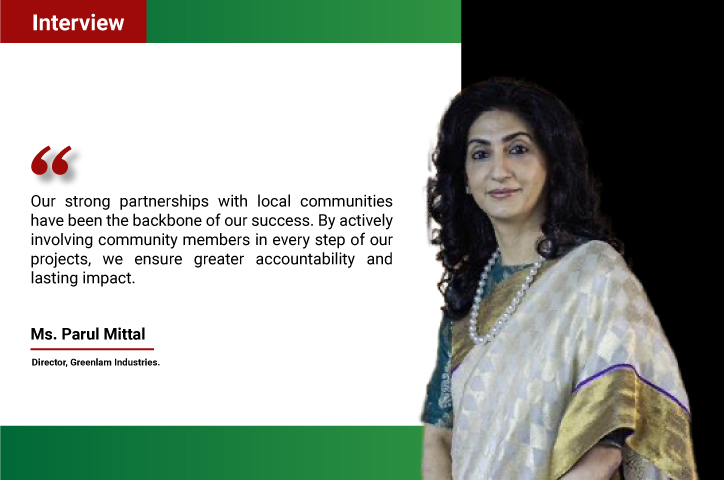

 A. Greenlam Industries is inspired to focus on improving learning outcomes in communities due to a deep commitment to social responsibility and the belief that education is a key driver of socio-economic development. Recognizing how quality education can transform lives and uplift entire communities, Greenlam Industries aims to address the significant educational disparities in underserved areas. This commitment extends beyond Greenlam's existing initiatives in healthcare and water, which primarily benefit adults. By prioritizing education for children, Greenlam aims to create a ripple effect of positive change that uplifts entire families and communities for generations to come.
A. Greenlam Industries is inspired to focus on improving learning outcomes in communities due to a deep commitment to social responsibility and the belief that education is a key driver of socio-economic development. Recognizing how quality education can transform lives and uplift entire communities, Greenlam Industries aims to address the significant educational disparities in underserved areas. This commitment extends beyond Greenlam's existing initiatives in healthcare and water, which primarily benefit adults. By prioritizing education for children, Greenlam aims to create a ripple effect of positive change that uplifts entire families and communities for generations to come.



 A. Greenlam Industries measures the impact of its CSR programs on school enrolment and attendance rates through pre and post surveys. Baseline and Endline surveys are also an integral part of our evaluation methodology. Periodic impact assessments are conducted to evaluate the effectiveness of the interventions. Additionally, qualitative feedback is also taken at regular intervals. Greenlam Industries utilizes a robust evaluation system to meticulously track the impact of its initiatives. The baseline surveys paint a clear picture of the existing educational landscape, including school enrollment and attendance rates, thus providing a crucial benchmark for measuring progress. Endline surveys, conducted after a program cycle, offer a direct comparison to the baseline, revealing the tangible impact of the interventions. This data-driven approach allows for a clear understanding of what works and where adjustments might be needed. Greenlam also conducts periodic impact assessments to delve deeper into the effectiveness of its initiatives. These assessments go beyond quantitative data, incorporating qualitative feedback from students, teachers, and community members. This multifaceted approach provides a holistic view of the program's influence, capturing both the visible and intangible benefits.
A. Greenlam Industries measures the impact of its CSR programs on school enrolment and attendance rates through pre and post surveys. Baseline and Endline surveys are also an integral part of our evaluation methodology. Periodic impact assessments are conducted to evaluate the effectiveness of the interventions. Additionally, qualitative feedback is also taken at regular intervals. Greenlam Industries utilizes a robust evaluation system to meticulously track the impact of its initiatives. The baseline surveys paint a clear picture of the existing educational landscape, including school enrollment and attendance rates, thus providing a crucial benchmark for measuring progress. Endline surveys, conducted after a program cycle, offer a direct comparison to the baseline, revealing the tangible impact of the interventions. This data-driven approach allows for a clear understanding of what works and where adjustments might be needed. Greenlam also conducts periodic impact assessments to delve deeper into the effectiveness of its initiatives. These assessments go beyond quantitative data, incorporating qualitative feedback from students, teachers, and community members. This multifaceted approach provides a holistic view of the program's influence, capturing both the visible and intangible benefits.

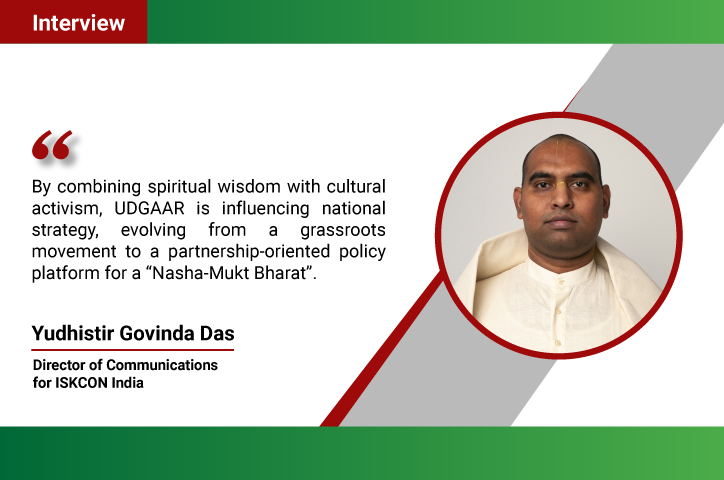




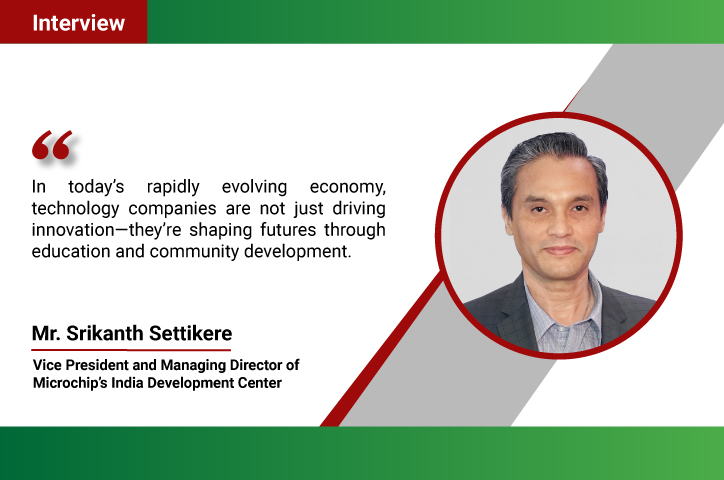
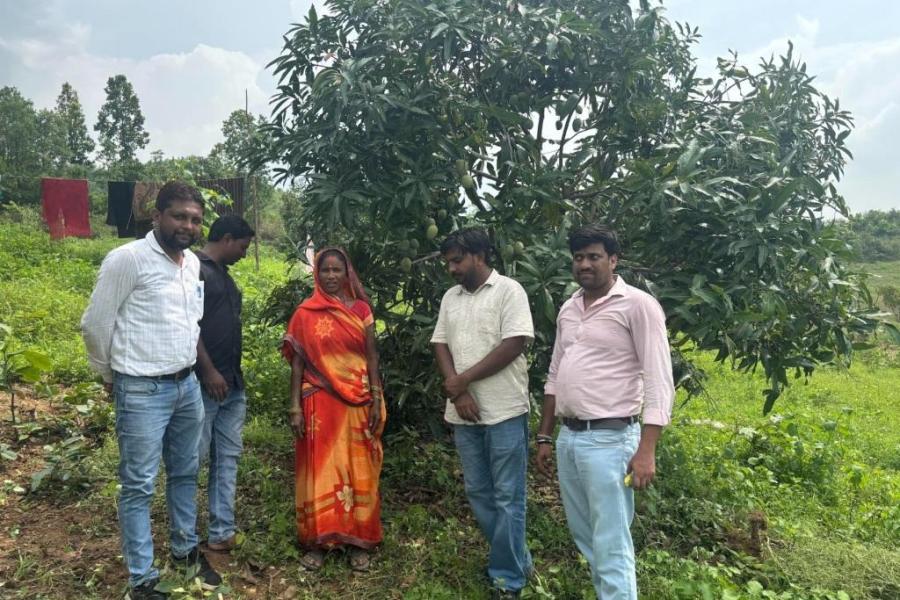

.jpg)




